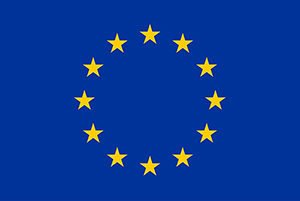
Impact is ‘the new black’, but how do we ‘wear’ it?
Revisiting the Nordic workshop on the regional innovation impact assessment framework for universities
This post is a throwback to exactly one year ago when I attended the first workshop canvassing the European Commission’s framework to assess universities’ impact on regional innovation. By that time, stimulating interactions between academe and local partners had been one of the Commission’s priorities for more than a decade, but it reputedly lacked in effective financial backing. All the while, policies for the international competitiveness of tertiary education tempted institutions to commit the larger half of their resources to quite different activities. In our time, a concerted effort of experts coordinating higher education, research, and innovation investments could result in a new model of EU-level support, giving a big boost to universities’ regional missions.
In anticipation of a tentative instrument for funding these missions, the Commission’s Joint Research Centre developed an assessment framework that might be utilised to justify resource allocation in future and invited policymakers, university managers, academics, and regional stakeholders to ‘pilot’ it the Nordic context. The event was hosted by Aalborg University Copenhagen and featured impact cases that paid heed to RUNIN studies of Aalborg and Linköping Universities. Coincidentally, I am covering these universities in my PhD research, which heightened my interest in the meeting.
The workshop promoted assessment in the form of ‘a narrative with numbers’, in which numeric indicators were intertwined with textual illustrations of universities’ regional impact. By adding the narrative part, the framework sought to enrich the habitual counting of spinoffs or student internships in the region with facts that figures could not capture. Furthermore, it was sensitive to the diversity of tertiary institutions and suggested weighting their impact against the characteristics of the region in its actual state of development. If coupled with a multiannual funding instrument, the framework had the potential to double down on the attention of cosmopolitan-oriented universities to their regional roles, as well as rebalance EU- and national-level policies that had been rendering the regional mission un-prestigious.
I found, however, that this provisional framework had several pain points. The authors – inevitably, if we consider the overall course of EU governance – followed the logic of steering performance through indicators and incentives. But this logic, as the record shows, entails the risk of prompting perverse behaviours and game-playing. The workshop essentially demonstrated that universities would produce success stories and brag about achievements instead of critically appraising their regional engagement, and the framework did nothing to avoid this.
My second concern was the economic definition of innovation (entrepreneurship, contracts with industry, etc.) that dominated the framework. Adopted in its original form, ‘a narrative with numbers’ would naturally convert into ‘numbers with a narrative’ and channel university resources towards economic outputs, ‘silencing’ community development and other kinds of social innovation processes. By comparison, the vast majority of Swedish impact cases submitted prior to the Commission’s initiative, reportedly, narrated contributions to policies, wellbeing, culture, and the like; and only less than 10% concentrated on technological and economic impacts.
Developed in isolation from the prospective framework for institutional funding, this framework was virtually impractical. Universities are complex organisations operating in complex environments, but performance assessment logic that ran through much of the framework was based on simple input-output indicators (e.g., business incubators ® student start-ups; international staff ® connections between regional and international innovation networks, and so on). In the absence of sufficiently sophisticated criteria, it could only perpetuate exclusion and elitism through measuring ‘impact readiness levels’, or through some sort of ‘impact excellence rankings’. Even if the narrative part addressed the complexity of university-regional relationships, there is no saying how evaluators would compare one complexity with another for allocation decisions.
Impact is ‘the new black’ in policy discourse, and the pressures on European universities to monitor, articulate, and maximise their regional impact will only be getting stronger. At the same time, neither the university nor its impacts can be locked in regional boundaries, and one day, this framework might be used for assessing universities’ impact on innovation on all geopolitical levels. Yet, by privileging particular practices and outcomes, it could prompt questionable behaviours, silence alternative narratives, and limit the institutional space for risk-taking and experimentation thereby quashing the very nature of innovation. Whilst the framework is ‘under construction’, we stand at a crossroads, and the choice we will make will either promote a more advanced future state or repeat past mistakes. Essentially, we need to determine not whether it is a good framework, but whether it is the right approach.
See also European University Association’s response on the regional innovation impact assessment framework for universities.


